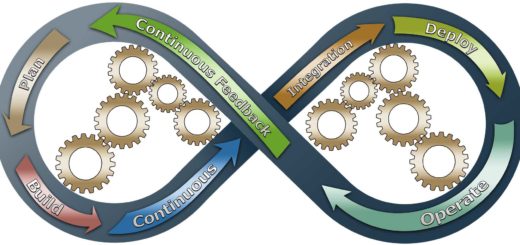5 steps to get started in your freelance career
4There is a growing market for freelancers, and that opportunity extends to the work of layout editors. It might be baffling for the beginning freelancer to know how to get started. In this article, I will discuss how I got started as a freelance layout editor, and describe some steps a “newbie” freelancer can take in gaining clientele and growing his or her business.
Make no mistake; you will not get rich quick as a freelancer. Before you even get started, you have to decide whether you are ready to take the plunge fulltime as a freelancer for your only source of income, or just do freelancing on the side to supplement your full- or part-time “day” job. In my case, I started my first attempt as a freelancer with too little capital, and wound up running out of finances before my business became profitable. I was reluctant to take out an SBA loan, so I ended up getting a job, temporarily, to build my capital back up. Once I had the resources and a good cadre of stable business, though, I quit my “day” job and went back to freelancing as my only job.
Even if you do everything right, freelancing is seldom as glamorous and lucrative as the movies and books might make it seem. I consider myself a moderately successful freelancer, but I’m not buying yachts or expensive houses. The major advantage to freelancing is freedom, but that freedom does not always extend to being free of financial worries. With wise, prudent spending, though, a freelancer can make a comfortable living while having the freedom to take a break now and again.
Step 1: Learn the Tools of the Trade
We also mention this in the post on how to get started as a freelance graphic designer. The most important step to take is to familiarize yourself with the various tools at your disposal. For layout design, the “go to” tool is, obviously, either Adobe InDesign or QuarkXPress. You will probably find Adobe’s products are overtaking the market, because of Adobe’s marketing and their excellent subscription plans. Learn how to use all of the software tools necessary for the type of work you plan on doing, either through classroom instruction or purchasing books and learning the software on your own. My own experience came from a mixture of classroom instruction and Adobe’s Classroom in a Book series of texts.
Step 2: Build that Portfolio
The next important step is to develop at least the beginnings of your portfolio. For me, this came naturally, since my degree program in Professional Writing and Editing required a portfolio. I simply used my graduate portfolio, to start. Then, as I began working on more complicated layouts, I added them to the portfolio while deleting works that I thought were weaker examples of my layout design. This is also a good time to build a good collection of templates, so you can turn work around quickly once the jobs begin flowing.
Step 3: Set Your Pricing Structure
Now that you have your knowledge of the tools and you have a portfolio to show potential clients, it is time to set your pricing structure. You need to set your prices reasonable enough to be competitive, but still high enough to be able to earn the amount of income you need this endeavor to pay you. You can develop some ideas for how much you might charge by checking the entries in the latest copy of The Writer’s Market , but bear in mind that the average prices listed there might not be applicable in your market.
Step 4: Begin Looking for Work
This is the biggest step: looking for work. You need to branch out as far as you can to look for jobs, taking as much advantage of free opportunities where they exist. Fortunately, there is a variety of web sites out there for freelancers, and all of them have their good points and bad points. I will go over the ones that I used, and how I used them to build up my business.
oDesk is an excellent resource for finding gigs, but you’ll see that quite a few of the buyers want to pay peanuts for the work. These clients are often from developing countries, and want someone with strong English-language skills to work for what, quite honestly, is all that they can afford. Even so, I’ve found a number of clients that pay well, and I have come to rely on oDesk for quite a few of the jobs I bid on. oDesk limits the number of applications you can have active at any one time, but the limit is easy to understand.
Elance is another freelancer site, with many of the same benefits and drawbacks as oDesk. I have used Elance a few times, but I find their “connections” quota to be cumbersome and difficult to rationalize. Sometimes, a bid will only take 1 “connection” point, but other times it will take multiple “connection” points for a single job. Elance allows you to bump your proposal to the top of the stack, though, by spending additional “connection” points.
Fiverr is another great site to consider, if you are content with doing a large number of smaller jobs as opposed to getting one big contract. The idea behind Fiverr is to offer a service for 5 bucks. For me, this can be a simple 1-page flyer or a 3-fold brochure; something small that I can do within 10-15 minutes. This is where templates really come in handy, since you can use a template to knock out 4 or 5 jobs in an hour. As you become an experienced seller on Fiverr, you can add additional services to your gigs to make even more money.
Last, but not least, let us not forget about Craigslist. The sites I’ve talked about so far all deal with a wide-based clientele, but you would be remiss if you ignored your local community. Through Craigslist, you can post your ad for free and draw in customers that might not otherwise know about your services.
With all these sources of work, it’s best to use them as a stepping stone. Your best customers will be returning customers or referred customers, on the websites above it can be hard to find work that pays decently so it’s best to use them to build up your portfolio.
Step 5: Keep Up with the Business
Those 4 steps get you started, and that brings us to step 5: keeping up with your business. Remember, you’ll have taxes and bills to pay, so keep careful track of all of your revenues and expenses. If you make it a point to sit down and “do the books” at least once a week, that makes things quite a bit easier at the end of the month or quarter. I do that, and do my own profit and loss statements at the end of each month. This makes your accountant’s job easier (and cheaper!), and helps you keep track of how successful your business is.
That’s it for now, folks! I hope these steps have helped you understand how to get started as a freelance layout editor, and you have years of successful business.
What do you think is the hardest part about starting as a freelancer?





Great article, Jeffrey. I would also suggest in-person networking as a great way to pick up clients early on. This could be in the form of a local chamber of commerce, a professional organization for your industry, or a referral group.
Thanks! Yes I agree, building up your network can work very well too, depending on how comfortable you are in those settings. Most freelancers I now that are doing it for a while even say they get at least 50% of their new orders through their network (either referrals or repeat business).
To answer your question about the hardest part about getting started for me would be to get over my fear of inadequacy and just start. Starting is the hardest part of any new adventure. Planning is easy. Doing the work is easy (or at least something you want to do). But actually putting myself out there to be judged is the hard part. That is what people are doing when you ask them for their business. They are judging you against all the others out there. Rejection is not fun but necessary. Very nice article and that you for the tips.
Hey Jeffrey,
Read your whole article and got very interesting and useful info’s that we should follow to start work as a freelancer and seriously these are just the basic steps that we have to follow if we want to be in bright future.
Thanks